Ben Dowman's Blog
April 14, 2021
Experiments vs Goals: 100 Days of cold water swimming
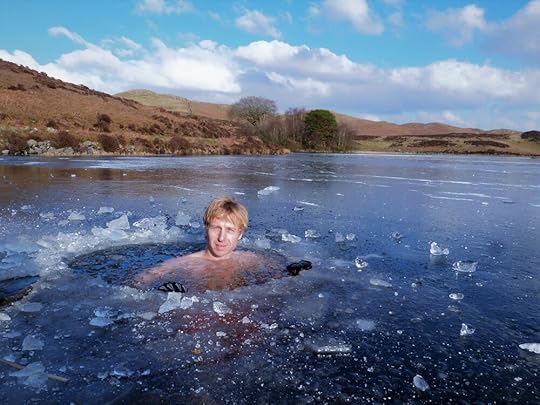
Everyone talks about goals.
Set goals. Achieve your goals. Get motivated to reach your goals.
Goals are the number one success topic that people write about (1). The message is that to be successful in life you have to set specific measurable goals.
But goals are also problematic. The 1st January is traditional goal setting time in the form of New Year’s Resolutions. I don’t really think New Year’s Resolutions work for most people. In fact, research suggests that only 8% of people achieve their New Year’s goals (2).
This year I didn’t make any resolutions or set any goals. Instead I decided to do an experiment (3). An experiment feels very different to a goal. An experiment is about discovering what happens and learning something. A goal is about achieving the outcome.
What happens is what happens.
A Cold Water Experiment
My experiment was going cold water swimming for a few days. In a lake. In January. I wasn’t quite sure for how many days and for how long I would swim. I was curious to try it despite hating the cold and usually doing my best to avoid it. Cold water swimming has been growing in popularity with many reported physical and mental health benefits from helping with depression (4) to mending a broken heart (5).
At the start of January the UK was in lockdown and I’m very fortunate to live in the Lake District with Lake Windermere close by. On day 1 I swam for 3.5 minutes. The water was 5C and it felt very cold, like ten thousand pins were being pressed into my body.
Day 2 was cold. I swam for just under 2 minutes. Day 3 I was in for 3 mins. Day 4 was 3 mins.
I immediately noticed that doing an experiment was different to goal setting. Having a goal requires ‘push’ and motivating yourself to do something. For many people this is one of the reasons to actually set a goal. An experiment is different because there isn’t the same achievement focus. I could stop at any time and there was no pressure to MAKE myself to do it. It felt more like being ‘pulled’ to do it because I wanted to discover what would happen. The curiosity of discovery made me WANT to do it. I kept going.
Curiosity or Achievement
Until I didn’t want to do it.
Around the middle of January I stopped ‘wanting’ to get in the lake. It was raining. It was windy. It was cold and since this was an experiment I could stop at any time. If you’re someone who has a focus on achievement then you probably have a well-established ‘internal voice’ which cajoles, encourages, berates or motivates you to ensure you reach the goal. All of this constitutes internal pressure and I always want to rebel against pressure. Whenever someone tells me to do something I automatically don’t want to do it (and that includes telling myself to do something).
However, doing an experiment changed this pressure. Once I’d accepted that the lake was going to be cold and unpleasant I was curious about how it would feel. Then I then wanted to go.
Goals aren’t all they seem
Research about goals suggests they work. Goals direct focus and attention, inspire commitment and can improve performance. There are decades of research supporting this.
But goal setting also suffers from a serious case of achiever bias. The world is full of who people achieved / won / succeeded through setting goals. But, what of all the people who set goals and didn’t achieve them – not so much publicity here. Our view of goals gets skewed because we only hear about the ones that worked.
When goals don’t work they can add to pressure and stress. And when goals feel like pressure and stress then performance can actually DECREASE. My experience of doing an experiment was that my ‘performance’ increased because I was driven by curiosity about what would happen.
I was curious about how long I could stay in the water and by day 15 was swimming for 6 mins. Don’t be under the illusion that it wasn’t painfully cold and excruciatingly unpleasant at times. It was both of those. But I became increasingly was curious about how many days in a row I could swim for. There was a local group who were raising money by swimming every day in January. I started to wonder if I could do that too? 31 days in a row? That would be an interesting experiment.
Growth Mindsets
For me, an experiment is aligned with a Growth Mindset. A Growth Mindset is more about learning and developing than success or failure. Carol Dweck writes, “the passion for stretching yourself and sticking to it, even (or especially) when it’s not going well, is the hallmark of the growth mindset. This is the mindset that allows people to thrive during some of the most challenging times in their lives.” (6)
As the end of January approached I began to wonder when I would stop. I had never imagined swimming for 31 days in a row during the coldest month and the experiment had continued longer than I could have imagined.
One of my realisations on day 31 was that I would probably never have an opportunity to do the experiment again. My work usually involves lots of travel and so I wouldn’t be able to swim every day. This year because of lockdown I could continue the experiment and see what happened.
Snow and Ice
Two days later (2nd February) the weather got really cold. It snowed. Despite this I began to wonder if I could swim every day for 50 days. 50 days! I was starting to notice physiological changes and wondered what would happen if I continued The curiosity was getting weird. No one was more surprised than me.
Then it got colder again and there was ice on the lake. I wondered what it would be like to go through a hole in the ice. So, I walked up to a tarn in the hills behind my house and got in the water. It was slightly surreal being in the water in a hole in the ice while people whizzed round the lake on ice skates.
Time to End the Experiment?
Fast forward 6 weeks to day 80 (21st March) and I was still doing the experiment! Each time I thought about stopping the realisation that I probably wouldn’t ever do it again made me want to continue.
However, around this time there was LOTS of rain and wind and I started to hate the experience of going swimming. It wasn’t the water itself but getting changed on the shore in a howling gale and driving rain. My swims became shorter and 6 mins became 5 and then 4. I decided that it was time to end the experiment. Day 90 (31st March) would be my last swim.
Day 90 - The Final Swim
As soon as I decided to stop the experiment I felt excited again. For my final swims I was curious about how long I could be in the water. For 3 months my swims had been around 6 mins long. The water was warmer now (7C instead of 5C) and for the final swim I wondered what 10 minutes in the water would feel like. Amazingly it felt fine, I was again surprised.
I announced with relief on social media that I had completed my 90th swim. That was it. Experiment over.
Or was it? People started commenting that I should go to 100 swims.
Experiment No.2
On day 90 I started another experiment. For each person who said I should do 100 swims, I invited them to join me for the final 10. I was pretty sure that no one would do it. It’s much easier to tell someone else to do 10 swims from the comfort of your warm home than it is to get in a cold lake.
Except then one friend said he would do it. My bluff was called!
I decided I would do 91 and if he didn’t carry on then neither would I.
But he did carry on. 92, 93, 94….
I did my 100th swim on April 10th.
I’m still swimming and right now I don’t know when the experiment will end. I might stop tomorrow because I don’t want to do it anymore. The whole point is not to set a goal and only continue while I’m interested in finding out what happens.

An invitation…..
My overriding learning from the last 100 days is that an experiment is different to a goal. I’m pretty sure that I would never have done 100 days of swimming if I had set it as a goal. I would have had to force myself to do it. As an experiment it was grim at times, but there was also a curiosity that kept me going.
I’m not suggesting that goals aren’t worthwhile. For many people they are highly motivating. But if you want to try a different approach then my invitation is to consider setting yourself an experiment instead of a goal. When you define success as being what you learn then your focus will be different. Difficulties become opportunities to learn.
People often set goals at the start the year but you can start them any time. Today could be the start of an experiment that would help you feel or behave differently or improve the way you do things. Tomorrow could be the end of it. Or the next day. Or maybe in a 100 days. Or maybe in a year’s time. Maybe you’ll like the experiment so much you’ll keep going and you’ll forget it was just an experiment. Either way, let me know, I’m curious!
Notes
I have no idea if this is true. It just seems that way to me.
Actually I started 3 experiments: cold water swimming, a plant based diet and intermittent fasting.
https://www.bbc.co.uk/news/health-45487187
https://www.theguardian.com/news/2021/mar/23/how-cold-water-swimming-cured-my-broken-heart
Mindset: How You Can Fulfil Your Potential Paperback – 2 Feb. 2012 by Carol Dweck.
April 9, 2020
What lies beneath – Becoming emotionally curious during Covid-19

Right now we are in unprecedented times and for many this means unprecedented emotional experiences, unusual feelings and unfamiliar responses. Last week I shared this excellent article, ‘The Discomfort you’re feeling is Grief’ which offered some insight into what people may be feeling. Here I want to dive deeper into some of what we’re feeling and seeing in others. Why are so many people than ever ranting online? Why are people judgemental and critical of the behaviour of others? Why do people react more angrily to things than they usually would?
My friend Jen Hodgins wrote this great article Navigating 'Anything but Normal' - 10(mostly) Practical Tips of which tip no. 1 was Get Emotionally Curious. I believe there are two benefits to getting emotionally curious and looking beneath the surface of our emotional experience:
1. Naming our feelings is essential for managing them. I will be proposing that sometimes what we’re feeling is a secondary feeling and there is a primary feeling beneath. If we can identify what we’re really feeling and then we have a greater ability to manage it, otherwise we’re reacting to the symptoms.
2. We are more likely to respond unhelpfully or behave disproportionately when we don’t recognise where a feeling is coming from. Understanding what we’re really feeling and what causes it can help us avoid unhelpful responses towards others and help us behave more proportionally.
How can we become more emotionally curious?In becoming emotionally curious we need to be aware of the internal processes which may be happening below our own emotional radar, in particular, displacement of feelings and the idea of primary and secondary feelings.
1. Displacement of feelings. Some of our responses towards people, things or authority may be displaced feelings, emotions that we direct towards something other than the real source. A simple example is someone who is upset with their boss but who can’t express that and takes it out on those at home in the evening. With Covid-19 there is no human perpetrator to blame and no-one to fight or punish. We cannot seek retribution, so any feelings of anger or frustration have to go somewhere else. When someone gets too close to us in the supermarket, our children misbehave or our colleague posts something online we don’t like, it’s easy for our anger and frustration to find an outlet there. We find ourselves angry or outraged about something that we would usually brush off. I have noticed more people than ‘ranting’ on social media about the behaviour of others. Of course, it is a good thing to be promoting responsible behaviours at this time but the tone of many of these is righteous indignation and anger. I suspect that this could be anger about Covid-19 and being locked down which is finding an outlet in the behaviour of others.
2. Primary and secondary emotions. Sometimes the feelings we experience are not our primary emotions, they are a secondary response and, to some extent, a defence against something we cannot tolerate. Many people would rather feel angry than powerless or helpless. Many people are living in great fear right now, fear for their health or the health of those they care about, or fear about their financial situation. Feeling powerless or helpless is a very difficult place to be. Anger gives us the illusion of potency and is more powerful energetically. It feels better to go online and get angry about behaviour of others than to sit with our own fear or powerlessness. Anger and righteous indignation make us feel more solid and powerful.
The Covid-19 virus acts in ways that makes us feel helpless. It does not discriminate based on religion, prosperity, social status, political leanings or geographic location. Although this virus is microscopic, our experience is that we are small and the virus is big. Feeling helpless is painful so we try to exert control where we can by hoarding toilet paper or tinned tomatoes. Being careful about distancing and social contact can be an unconscious acknowledgement of our vulnerability and some people would rather show bravado and recklessness when this is too painful.
So what?For me there are two take-aways here, one with self and one with others.
1. With ourselves. It is important to remember that our feelings and emotions are complex and multi-layered and right now more so than ever. Now is a good time to pause before reacting. Giving ourselves time before responding online or replying to a colleague provides space to be curious about our feelings. Sitting with something can bring insight and clarity. Maybe the anger towards that person or situation is really mild annoyance and deserves to be treated as such. This is easy to write about and less easy to do so we need to be kind and compassionate to ourselves if it's a struggle.
2. With others. The feelings of others are also complex multi-layered and they may react with anger or indignation that is disproportionate. We might remember that there could be something else beneath their feelings. When I read someone online ranting I try to remind myself that they might just be feeling helpless or terribly afraid. This changes my feeling towards them and I feel more compassion. My own response is less likely to involve lashing out with vitriol. Sometimes, of course, we can't do this and the emotions of others affect us personally, and in which case, see no. 1.
In shortI believe what we need right now is to be kind to ourselves and others. We are in this together and we bring our messy, complicated emotional selves. The Covid-19 pandemic and it's repercussions affect us deeply and our emotional responses can be surprising and out of proportion. If we can pause a little longer and recognise there is more beneath the surface then we may find ways to respond that are more helpful for us all.
February 26, 2020
Cultural Change. 3 examples and 3 ideas: Fun, Space Rockets and Portugal

In a previous article I discussed cultural change and the important contribution that Leaders make to influencing behaviour. I want to share some real-life examples of behavioural and cultural change that illustrate three different approaches: making change more fun, removing friction and addressing the underlying causes. I’m really interested in more examples of these in an organisational setting so comment if you have something to add.
1. The Fun TheoryWhen organisations describe their culture and values, how often do you see information presented in a fun and engaging way? And, how often are desired behaviours rewarded and incentivised into a fun way? It's not that the message isn't important and to be taken seriously but sometimes the impact is greater if people are engaged and their interest piqued.
Safety briefings before take-off must win the prize for the most important yet ignored information. We've all heard it before right! Which is why, when I saw this Air New Zealand safety video, I absolutely loved it.
Volkswagen also explored the fun idea with their 'Fun Theory' competition and the winning entry was the ‘Speed Camera Lottery’. This involved a camera that recorded the speeds of all drivers who passed. Drivers who exceeded the speed limit were issued with fines but drivers who drove at or below the speed limit were automatically entered into a lottery with cash prizes (paid for by fines). The idea was trialed in Sweden and the data showed that the average speed of cars passing the camera dropped from 32km/h before the experiment to 25km/h after (watch the video it’s fun!).
So, idea number 1 in changing behaviour is thinking about how to engage people in a lighter way and incentivise the desired behaviours.
2. Make change easy – removeEven if people in an organisation are genuinely motivated to change it doesn't mean it will happen. Behaviourial scientist Dan Ariely, author of Predictably Irrational uses a metaphor of a space rocket in this TED talk that I really like. For a space rocket to take off it needs fuel to create propulsion and needs to minimise the resistance produced by friction. We could think of fuel as being motivation to change behaviour and friction as the barriers to changing. If people are motivated but there are barriers then nothing will happen. In an organisation these might be processes, procedures or metrics that create friction and work against a desired culture. One example I met recently was an organisation that wanted a ‘one team’ culture where it was ultimately about the consumer but their metrics were all about individual team performance (which would often come at the expense of other teams). What was good for the ‘one team’ and the consumer might mean resources being shared between teams, which the metrics wouldn’t reflect, so there was a reluctance to do this.
So, idea number 2 is to reduce friction and consider the (sometimes not so obvious) barriers to the desired behaviours.
3. Addressing the underlying causes - Portugal’s Drug ProblemI think this is the ‘big one’ when it comes to cultural change and there has to be a genuine appetite to understand the root causes of issues and a willingness to address these. I find this example of Portugal addressing a drug problem really interesting.
In the 1990s Portugal had a major problem with heroin and an estimated 1% of the population were addicted. Portugal had the highest rate of HIV infection in the entire European Union. The government’s response had been to introduce increasingly harsh policies led by the criminal justice system and by the late 90s, about half of the prison population were there for drug-related reasons. It became apparent that the approach wasn’t working and, instead of imposing even harsher penalties and greater enforcement, Portugal looked for a different solution.
Portugal became the first country to decriminalise the possession and consumption of all illicit substances in 2001. Rather than being arrested, those caught with a personal supply might be given a warning, a small fine, or required to discuss treatment, harm reduction, and the support services that were available to them.
The opioid crisis soon stabilised, and the following years saw dramatic drops in problematic drug use, HIV and hepatitis infection rates, overdose deaths, drug-related crime and imprisonment . HIV infection plummeted from an all-time high in 2000 of 104.2 new cases per million to 4.2 cases per million in 2015
There wasn't just a change in the law but an enormous cultural shift, and a change in how the country viewed drugs, addiction – and itself. A Guardian article reports, "People who had been referred to as drogados (junkies) – became known more sympathetically, and more accurately, as 'people who use drugs' or 'people with addiction disorders'".
Portugal’s policy rests on three pillars: one, that there’s no such thing as a soft or hard drug, only healthy and unhealthy relationships with drugs; two, that an individual’s unhealthy relationship with drugs often conceals frayed relationships with loved ones, with the world around them, and with themselves; and three, that the eradication of all drugs is an impossible goal.
In summary I sense that the shift was about recognising drug taking was a symptom of something rather than a behaviour to be punished. I’m sure some people will have views about right and wrong here but, to some extent, I think we have to look at what works in practice rather than what we think should work.
So, idea number 3 is investigating the root causes of problems in a culture and being willing to look at what works.
Summary3 examples and 3 ideas. Fun and incentivising the desired behaviours, reducing organisational friction and addressing the root cause of cultural issues. I'm interested in any examples you have of these ideas in practice so comment below with your thoughts.
February 7, 2020
Cultural Change, Leadership and Social Conformity

I recently saw a fascinating video on social conformity. It shows a dentist’s waiting room with 10 people, 9 of whom are actors. Whenever a beep sounds all the actors stand up momentarily and then sit. The one ‘test subject’ initially looks confused when this happens but after only 3 beeps she starts joining in.
The video is actually a modern version of the classic psychology experiment by Asch (1951) who investigated the extent to which social pressure could affect a person’s behaviour.
In this modern experiment the actors leave one by one until only the test subject remains and, even when alone, she continues to stand up at each beep. The experiment becomes really interesting when a new person arrives. After hearing the beep and seeing the woman stand he asks her, “Why are you standing up?” She replies, “everybody was doing it, I thought I was supposed to.” He then joins her in standing at the next beep.
It seems unbelievable and it’s easy to think, ‘I would never do that,’ but social conformity is often something we are unaware of, it’s below the radar. The video immediately got me thinking about the impact of culture in organisations and the powerful effect this can have on behaviour.
A quick detour - What is Organisational Culture?
Culture is often defined as ‘the way we do things round here’ and typically shows itself through people's behaviour. In reality culture is like an iceberg and it’s the under the surface stuff, the beliefs, assumptions, values and attitudes within an organisation which drive what’s above the surface. Friendship groups, families, communities, businesses and nations all have their own cultures.
Culture has a major impact on organisational success or failure. The Guardian this week reported on the Ian Paterson inquiry findings (Paterson is currently serving a 20-year jail sentence for subjecting more than 1000 patients to needless and damaging operations) which concluded Paterson was able to continue in NHS and private hospitals because of “a culture of avoidance and denial.”
Other companies have been praised for their forward-thinking culture. Retail business Timpson describe their "upside down management" approach where “we give our colleagues total authority to do whatever they can to amaze our customers. If we make a mistake, then we can put it right there and then without the need to speak with a manager. We trust our colleagues to run our business as they see fit.” Timpson are also the biggest recruiters of ex-offenders in the country.
Conformity and Cultural Change
Increasingly, I am finding that organisations want to work with their culture and change it. The conformity experiment highlights how difficult changing behaviour can be but also, once a majority are on board, it shows how a tipping point is created that will bring others along.
The reality is that people have different amounts of influence. Leaders typically have a disproportionate amount of influence and their example is critical. People often follow the example set by leaders (both good and bad) which is why any cultural change has to be wholly supported by a leadership team. The conformity experiment is a powerful reminder that people will follow the behaviour of others.
So What?
Changing organisational culture is complex and when I began writing this I had five themes I wanted to cover. Leading by example is one of those but I'm going to save the others for a future article. For now, let's consider leading by example.
Most of us belong to many groups; families, communities, work teams, whole organisations, our nation, a group of nations (oh no, wait a minute…). Each of these has a culture (whether stated overtly or not) and this below the surface ‘way we do things’ has a major impact.
We each have opportunities to influence the organisations we are part of, in our work, communities and nations and leading by example is a powerful communication. We might not always get it right but our response can become another opportunity to lead by example. It would, of course, be unrealistic to think that we can change everything this way and the world is a complex web of systemic influences but, as Gandhi said, “We but mirror the world. All the tendencies present in the outer world are to be found in the world of our body. If we could change ourselves, the tendencies in the world would also change. We need not wait to see what others do.”
References
1. Social conformity experiment video https://youtu.be/o8BkzvP19v4
2. Solomon Asch’s original conformity experiment https://www.simplypsychology.org/asch-conformity.html
3. Health service culture https://www.theguardian.com/society/2020/feb/04/ian-paterson-inquiry-culture-of-denial-allowed-rogue-breast-surgery
4. Timpson culture https://www.timpson.co.uk/about/careers-at-timpson
January 22, 2020
The Paradox of Self-Awareness
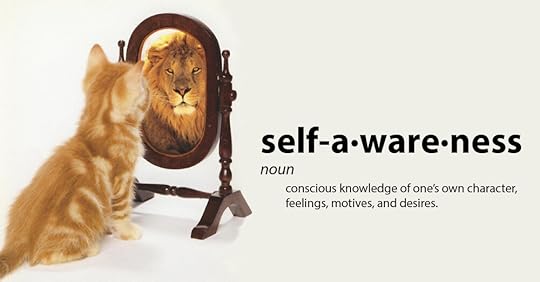
Someone recently asked me, “How self-aware are you?” My initial response was that that I’m pretty self-aware, I’ve done lots of coaching, personal development and mindfulness and know myself reasonably well. On reflection I also observed that each time I become aware of something about myself it reminds me how of little I knew.
What is self-awareness?Author of Emotional Intelligence, Daniel Goleman, proposed that self-awareness is “knowing one’s internal states, preference, resources, and intuitions.” It is also being aware of how consistent (or inconsistent) our self-view is compared to an external data i.e. how others view us or against certain measures.
Does self-awareness matter?Erich C. Dierdorff and Robert S. Rubin collected data from an executive development program at a Fortune 10 company. They tested 58 teams with more than 300 leaders in a business simulation and examined the extent to which accurate self-awareness was related to team effectiveness.
When individuals were less self-aware (i.e. there was a large gap between the assessments of their own behavioural contributions and the assessments of their team members), the teams substantially suffered. In fact, teams with less self-aware individuals made worse decisions, engaged in less coordination, and showed less conflict management.

The most damaging situation occurred when teams were comprised of significant over-raters (i.e., individuals who thought they were contributing more than their team members thought they were). Just being surrounded by teammates of low self-awareness (or a bunch of over-raters) cut the chances of team success in half.
The Dunning-Kruger effectOver-rating one’s own abilities is something Justin Kruger and David Dunning studied in a variety of social and intellectual areas. The authors found that participants scoring in the bottom quartile on tests of humour, grammar, and logic grossly overestimated their test performance and ability. Although their test scores put them in the 12th percentile, they estimated themselves to be in the 62nd. This is illustrated by the fact that 90% of people think they have an above average sense of humour and 95% of people think that are above average drivers. As Charles Darwin said, “Ignorance more frequently begets confidence than does knowledge.”
The Paradox of Self-AwarenessTo me there is a certain paradox with self-awareness because if someone has very little they will, by definition, not be aware of this. Similarly, the more someone is self-aware, the more they realise how much there is to discover.
Developing Self-awarenessMark Manson (NY Times bestselling author of The Subtle Art of Not Giving a F*ck) writes that there are 3 levels of self-awareness. I'll summarise here but I highly recommend the article if you're interested.
Level 1 is about our automatic patterns of avoidance through distraction. Most of the time we avoid pain or difficulty by distracting ourselves with something, anything… our phones, food, TV, exercise, talking to others…. Some of this might, of course, be very helpful but when we aren’t aware of it, when we distract ourselves on autopilot then our distractions are choosing us instead of us choosing them.
Level 2 is about being aware of what we’re actually feeling and why. This can be hard. It’s often much easier to project our anger onto that guy who cut us up on the road or take it out on a partner. Removing distractions allows us to have more space to feel things and pursue a line of self-enquiry to discover more about them. Coaching, therapy, meditation and journaling can all provide a similar space where we can explore this more fully.
Level 3 is about becoming aware of our blind spots. We like to think of ourselves as rational beings but the reality is far from this. Our memories are not as accurate as we think (ask the police who will get two conflicting eye-witness reports about something), we are constantly subject to confirmation bias where we unconsciously prefer to confirm ideas we already have rather than question them, and we have a negativity bias in our decision making (we would typically feel worse about losing £1000 than we would feel good about gaining £1000). There are many many examples that merit an article in themselves.
So what?Research tells us that developing self-awareness makes us more productive in teams, better leaders and better partners and friends. The good news is that you can start right now. You might like to notice your responses to this article and reflect inwardly on them without judgement. For myself, as I write this, I notice some pride and anxiety. I’m pleased with what I’ve written but also anxious that when I press the ‘publish’ button I will open myself to criticism for it. Developing self-awareness isn’t always easy but I think it’s always worthwhile.
I References
1. Emotional Intelligence: Why It Can Matter More Than IQ by Daniel Goleman.
2. https://hbr.org/2015/03/research-were-not-very-self-aware-especially-at-work
3. Unskilled and unaware of it: how difficulties in recognizing one's own incompetence lead to inflated self-assessments. Kruger J, Dunning D. Journal of Personality and Social Psychology. 1999
4. Mark Manson – The Three Levels of Self-awareness https://markmanson.net/self-awareness
January 7, 2020
Becoming an outstanding coach in 2020
I want to share something one of my teachers said about being an outstanding coach.
A couple of years into learning about coaching and having completed a lot of coach training, I knew that I wanted to be a great coach (whatever that was). I wondered how I could improve, what I should learn and study or what training courses I should attend.
So, when my teacher said, “There’s one thing that separates good coaches from outstanding coaches,” he immediately had my attention.
I wondered what it was. Great rapport building skills? Great questioning skills? Knowledge of leadership and business? A huge toolbox of different techniques and approaches?
Whatever it was I knew that I would learn it and would make sure I practiced and practiced.
I listened intently with pen in hand, “The thing I see that separates good coaches from outstanding coaches is having done the necessary work on themselves.”
‘Doing the necessary work on themselves’? What does that mean? I’m not even sure that’s relevant for me. I don’t need to do work on myself. Anyway, one of the fundamentals of coaching is that the coach doesn’t need to know lots about the subject matter or the content of a client’s challenge in order to help. Great coaching is about process not content.
But, my teacher was suggesting that coaches working on themselves was about more than dealing with unresolved stuff and understanding different challenges, he was asserting that outstanding coaches have experienced the PROCESS of working through things on a personal level (regardless of what the content might be) and therefore have a ‘felt’ sense of doing the work. This gives them a deeper conviction in the process.
Over the last 15 years I’ve worked with a number of coaches and my teacher was absolutely right, being coached has had a huge impact on my own coaching practice. But, I think it’s something coaches rarely do and it’s the coaching industry’s ‘elephant in the room’. Sure, most coaches have a few coaching sessions while they’re learning or while practicing with someone but, in my experience, only a small number engage in the kind of coaching relationship that we would recommend for our clients with the kind of commitment to develop and growth that we’d expect.
Being coached has given me some really important things:
1. It’s given me repeated experiences of what it’s like to work through something, to start with something that is problematic and may seem impossible and to arrive at the end feeling differently and with new ideas or perspectives. This is a felt sense and an intellectual understanding, which has led to a deep conviction in the power of coaching. Over the years, when feeling challenged working with my own clients this conviction has helped me to stay focused and on track.
2. It has helped me work through things and make progress in ways I wouldn’t have expected. My self-awareness has developed, “Oh, that’s why I always find that difficult…”, “Oh, this is why the same thing always happens…..” This also helps the Coach-Client relationship because it’s easier to recognise what is your own ‘stuff’ and what belongs to the client.
3. It’s shown me what works (and what doesn’t work). I’ve learnt loads about coaching by ‘watching’ how someone works with me. A few things were good reminders of what not to do but many more that were approaches I could use myself. The toolbox I was seeking appeared indirectly through this.
I’m curious how many coaches actually work with a coach themselves. I’m not suggesting that everyone should always be having coaching but, when it comes to becoming an outstanding coach, I think being coached is often not considered to be that essential when, in reality, I believe it is.
June 4, 2019
The Importance of Rapport
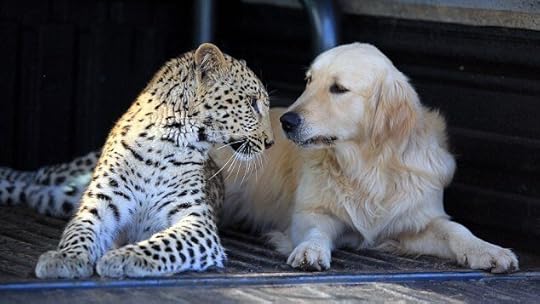
Rapport is often described as:
A sympathetic relationship or understanding
The process of making a 2 – way connection with someone else
Experiencing a genuine sense of trust and respect with another person
Building rapport is the ability to build a bridge of harmony or trust between people.
People like people like themselves
When we meet people we typically seek out commonality and build rapport through similarity. Excellent communicators are able to adjust their communication style to match the person with whom they are relating. That person receives the message "this person is like me."
Strategies to Build Rapport 1. Matching / Mirroring Body PositionAdjust your body to approximate the other person's posture (easier if they sit down first). Match the upper or lower portion of the other person's body. Note the way the other person uses their face - raise their eyebrows, wrinkle their nose, etc. Match characteristic poses the other person offers with their head and shoulders.
Matching is to have your physiology in the same way as the other persons, if the person has their right leg crossed over the left leg then you sit the same way.
Mirroring is to match back the person's behaviour as a mirror image. So that as the person looks at the practitioner, the person sees is a mirror image of themselves. Either way is better.

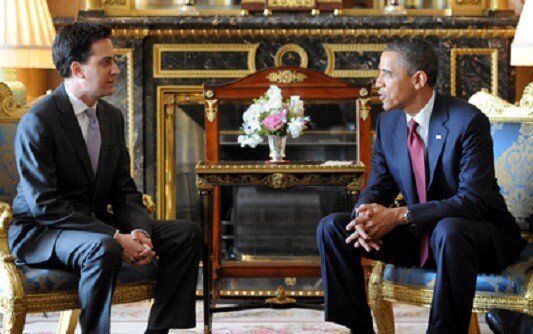

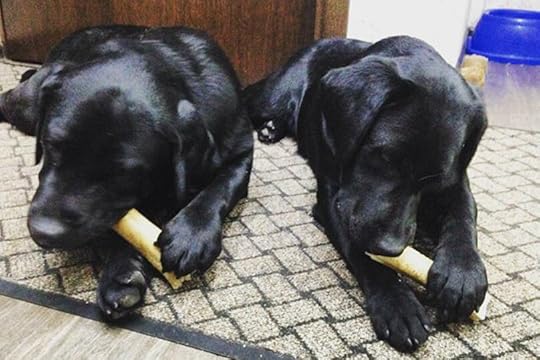
2. Matching Key Gestures and Movement

You can match and use people's key gestures, which are repetitive gestures that occur usually to emphasise a point and are frequently accompanied by a shift in their voice volume. Match their key gestures so that when you make a point you can use their gestures.
3. Matching BreathingAdjust your own breathing to synchronise with the other person's breath rate and location.
4. Matching Vocal QualitiesListen for the tone, tempo (speed), volume and pauses of the person with whom you are interacting, and as accurately as possible, matches back these elements in subtle ways. For example, if someone speaks slowly, a skilled practitioner slows down the rate of his speech, if the person talks loudly, then the expert adjusts his volume to match that volume. Match tone, tempo, volume, intensity, pitch etc. Note and match in your own language the repeated phrases or stylised grammatical use of the other person.
5. Matching Key Words and PhrasesKey words and phrases are repetitive and are given special emphasis (analogue marking) by a subtle but noticeable shift in volume or rate increase and are often accompanied by a key gesture. Youth culture is continually developing new key words as part of defining their identity – in this case rapport can be about the practitioner recognising the words but not necessarily using all of them.
Student: "Doesn't my painting look mint when it is hung on the wall?"
Teacher: "Yes! It looks really mint."
Values are the things in life a person invests their time, money and effort to achieve. For example: fun, freedom, honesty, love, friendship, or leisure time are words used to describe what people value. By aligning with their values, or by discussing things in terms of the individual's hierarchy, the same unconscious message that "you are like me" is sent. If the person's values are very different than yours, you DO NOT have to lie to them. Keep in mind that there is always 1% that you can agree upon 100% of the time; start there!
Client: "It love to go sailing on the weekends. "
Salesperson: "What is important to you about sailing?"
Client: "When I go sailing, it feels so free - I get a great sense of freedom when I'm out there in the open waters."
Salesperson: "1 can totally understand that, when I go running it just feels so free to be out in nature.
November 21, 2016
Leaders: Stop being so negative and focus on what's right
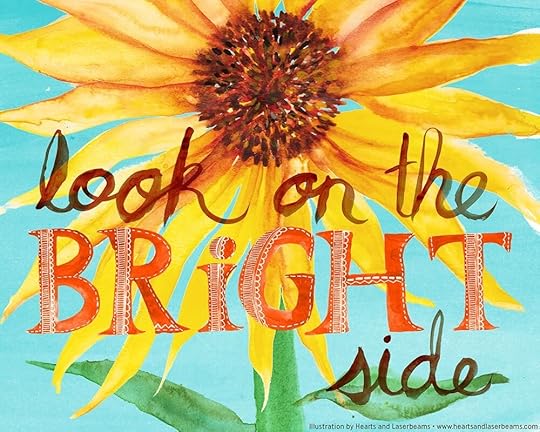
(aka The Hidden Dynamics of Positive Thinking)
Last week I was facilitating a leadership development programme. At one point Tom, one of the participants, began talking about the difficulties he was facing at work. Tom described a hectic day job with constant pressure for his team to achieve certain outputs and measurables, no time to do anything other than firefight, a lack of support from senior managers - more precisely a lack of contact with senior managers and repeated failure of his manager to follow through on commitments for development and support. Listening to him describe it the other course participants and I could all feel the burden of it. The atmosphere in the room had suddenly become heavy. Frankly, it sucked.
Before I could respond, another group member, John, jumped in and said "Tom, I think you're being really negative, you need to start looking at the positives here, at least focus on what's right about your job". Others agreed with what, on the face of it, seemed like some helpful personal feedback and suggestion to deal with the situation.
Monty Python fans will remember well the instruction to 'Always Look On The Bright Side Of Life' no matter how bad things get. In his hugely popular book, The Power of Positive Thinking, Norman Vincent Peale described several ways to deal with adversity - expecting the best and standing up to our obstacles.
“When you expect the best, you release a magnetic force in your mind which by a law of attraction tends to bring the best to you.”
“Stand up to an obstacle. Just stand up to it, that's all, and don't give way under it, and it will finally break. You will break it. Something has to break, and it won't be you, it will be the obstacle.” ― Norman Vincent Peale, The Power of Positive Thinking
So, that's it. Tom needs to be positive, stand up strong to these obstacles and expect the best.
Implicit in this feedback to Tom that he should be more positive was the suggestion that he was somehow at fault, that his outlook was flawed and that it was HIS thinking that was ACTUALLY contributing to the problem. Forget his manager's lack of support and repeated lack of follow through, forget the senior management team and their drive for more and more output, forget the directors and their cost-cutting efficiency strategy, this was mainly Tom's fault and he needed to address it. It was subtle, of course. No-one would say explicitly that it was Tom's fault but the implication was there, a hidden sub-text that said 'your feelings should be ignored, plaster a smile on your face and keep going".
My own experience in life is that 'being positive' can often perpetuate a difficult situation and even exacerbate things. A key facet of positive thinking is the reframing of a situation to find something good, an altering of the meaning of something from what it is. Yet, very often this is a actually a covert denial of reality, an unspoken rejection of things as they are or a refusal to accept our feelings and thoughts or the feelings and thoughts of others. Positive thinking leads us away from acknowledgement of 'what is'. Paradoxically, acknowledgement of what is happening is the very thing required in order to begin a process of change. It's very difficult to successfully implement change things if we don't begin this from the current reality. So it seems our positive thinking may lead us further from a solution not closer.
So, what is the answer?
One of the issues with positive thinking is that it excludes. It excludes our experience without giving us space and permission for acknowledgement. It is this exclusion and lack of acknowledgement that I believe holds the way forward. If we begin to make our experience more inclusive, to acknowledge all that is there, that which is problematic, that which we might feel grateful for, that which we are unsure of, that which we don't know then we might begin to build a more solid platform to work from. This involves being open and willing to engage with enquiry rather than judgement, with seeking to understand rather than seeking to reframe.



